
Tetris Attack, also known as Panel de Pon in Japan, is a puzzle video game developed by Intelligent Systems and published by Nintendo for the Super Nintendo Entertainment System. A Game Boy version was released a year later. In the game, the player must arrange matching colored blocks in vertical or horizontal rows to clear them. The blocks steadily rise towards the top of the playfield, with new blocks being added at the bottom. Several gameplay modes are present, including a time attack and multiplayer mode.
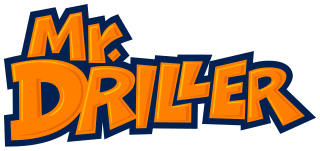
Mr. Driller is a puzzle video game franchise created by Yasuhito Nagaoka and Hideo Yoshizawa for Namco. The eponymous first game was released in 1999 for arcades and several home consoles, such as the PlayStation. Gameplay in the series consists of controlling Susumu Hori, the titular Mr. Driller, or one of his friends and destroying colorful formations of blocks to make it to the bottom of a well. In order to survive, players need to collect air capsules to replenish their depleting oxygen and avoid being crushed by falling blocks.
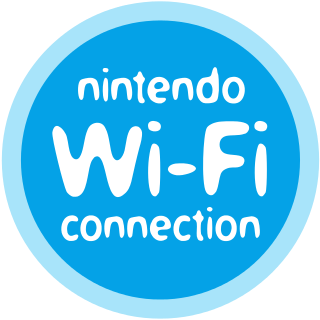
The Nintendo Wi-Fi Connection is a defunct online multiplayer gaming service run by Nintendo to provide free online play in compatible Nintendo DS and Wii games. The service included the company's Wii Shop Channel and DSi Shop game download services. It also ran features for the Wii and Nintendo DS systems.
Art Style is a video game series created by skip Ltd. for WiiWare and DSiWare. The first game in the Art Style series, Orbient, was released for WiiWare in September 2008. Another two Art Style games, Cubello and Rotohex, were released during October 2008 while two more were added in 2010. Seven DSiWare Art Style games were released on that service after its launch in Japan in December 2008, with the first two being Aquario and Decode.

The Nintendo DSi is a dual-screen handheld game console released by Nintendo. The console launched in Japan on November 1, 2008, and worldwide beginning in April 2009. It is the third iteration of the Nintendo DS, and its primary market rival was Sony's PlayStation Portable (PSP). The fourth iteration, entitled Nintendo DSi XL, is a larger model that launched in Japan on November 21, 2009, and worldwide beginning in March 2010. Development of the DSi began in late 2006, and the handheld was unveiled during an October 2008 Nintendo conference in Tokyo. Consumer demand convinced Nintendo to produce a slimmer handheld with larger screens than the DS Lite. Consequently, Nintendo removed the Game Boy Advance (GBA) cartridge slot to improve portability without sacrificing durability.

Brain Age Express are three educational puzzle video games developed by Nintendo for the Nintendo DSi's DSiWare download service. They are the third series of games in the Brain Age series, and are repackaged versions of both Brain Age: Train Your Brain in Minutes a Day! and Brain Age 2: More Training in Minutes a Day! games, featuring both old and new puzzles.

Picopict, known as Pictobits in North America and as Pictopict in Australia, is a puzzle video game developed by Skip Ltd. and published by Nintendo for the Nintendo DSi's DSiWare digital distribution service. It is one of seven games released for the DSi's Art Style series of video games. It was announced on January 26, 2009, was released two days later alongside Somnium, another Art Style game, and was released in North America and PAL regions in the same year, on May 18 and May 22 respectively. In Picopict, players use the touchscreen to move coloured blocks into a formation, such as a four-block line or a 2x2 square. This contributes to an 8-bit image, which consist of various Nintendo Entertainment System (NES) characters, such as Mario, Link, and Bowser.
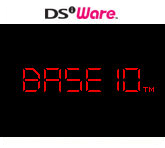
Code, known as Base 10 in North America and Decode in Japan, is a puzzle video game developed by Skip Ltd. and published by Nintendo for the Nintendo DSi's DSiWare digital distribution service.

Art Style: Nemrem, known as Art Style: Zengage in North America and Art Style: Somnium in Japan, is a puzzle video game developed by Skip Ltd. and published by Nintendo for the Nintendo DSi's DSiWare digital distribution service. It is one of multiple entries in the Art Style series of games. It first released in Japan in January 2009, and was later released in PAL regions and North America in May and July 2009 respectively. In Nemrem, players are given increasingly difficult slide puzzles that require them to slide tiles to match the position of colored balls with colored tiles.
Kubos, also known as Precipice in North America and Nalaku in Japan, is a puzzle video game developed by Skip Ltd. and published by Nintendo for the Nintendo DSi's DSiWare digital distribution service.

Boxlife, known as Hacolife in Japan, is a puzzle video game developed by Skip Ltd. and published by Nintendo for the Nintendo DSi's DSiWare digital distribution service.

Dr. Mario Express, known in PAL regions as A Little Bit of... Dr. Mario, is a Mario action puzzle video game published by Nintendo. The game was released as a DSiWare title for the Nintendo DSi platform. Dr. Mario Express was released as a launch title for the DSiWare service in Japan on December 24, 2008, and was released in both North America and PAL regions in 2009. The game was developed by Arika, which had also created Dr. Mario Online Rx for WiiWare.
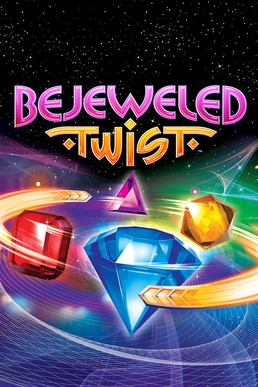
Bejeweled Twist is a tile-matching puzzle video game developed and published by PopCap Games. It is the third game overall and first spin-off game in the Bejeweled series, as well as being the first PopCap title to be released in high definition and feature widescreen support.

Dragon Quest Wars is a 2009 turn-based strategy video game developed by Intelligent Systems and published by Square Enix for the Nintendo DSi via its DSiWare download service. It is part of the Dragon Quest series and supports up to three other players in multiplayer.

The Nintendo DSi system software is a set of updatable firmware versions, and a software frontend on the Nintendo DSi video game console. Updates, which are downloaded via the system's Internet connection, allow Nintendo to add and remove features and software. All updates also include all changes from previous updates.
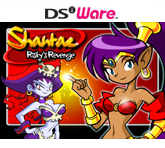
Shantae: Risky's Revenge is a platform video game developed by WayForward Technologies for the Nintendo DSi. The second installment in the Shantae series, Risky's Revenge is the sequel to the 2002 Game Boy Color video game Shantae, and follows series protagonist Shantae as she sets out to stop the ambitions of the nefarious pirate Risky Boots.
Ivy the Kiwi? is a platform video game developed by Prope and designed by Yuji Naka. The Windows Mobile version was released in Japan in November 2009 and in North America in January 2010. That same year, versions for Wii and Nintendo DS were published by Namco Bandai Games in Japan, by Xseed Games in North America, and by Rising Star Games in Europe. The game was ported and released for iOS in October 2012 and Android in August 2013.

Art Academy, also known as Art Academy: Learn painting and drawing techniques with step-by-step training in the PAL regions and Artistic Taste Classroom DS in Japan, is an art training software for the Nintendo DS. It was developed by Headstrong Games and published by Nintendo. Art Academy was originally a two-part training application only available for download via the DSiWare service since 2009. It was later re-released in 2010 as a fully compiled, retail-able DS Game Card with added features, thus also making it available for original Nintendo DS and Nintendo DS Lite users.
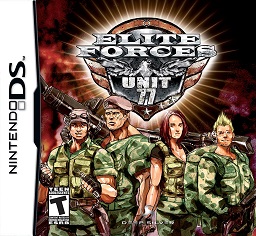
Elite Forces: Unit 77 is an action video game developed by Spanish studio Abylight and Gammick Entertainment for the Nintendo DS and DSiWare.















